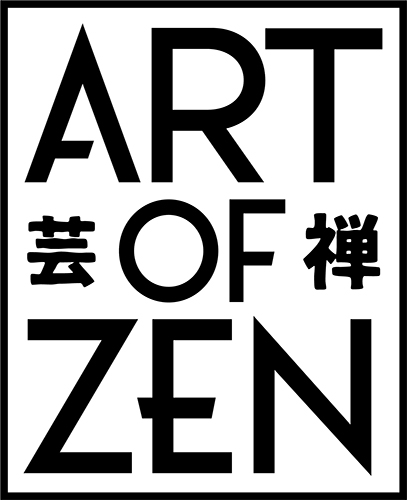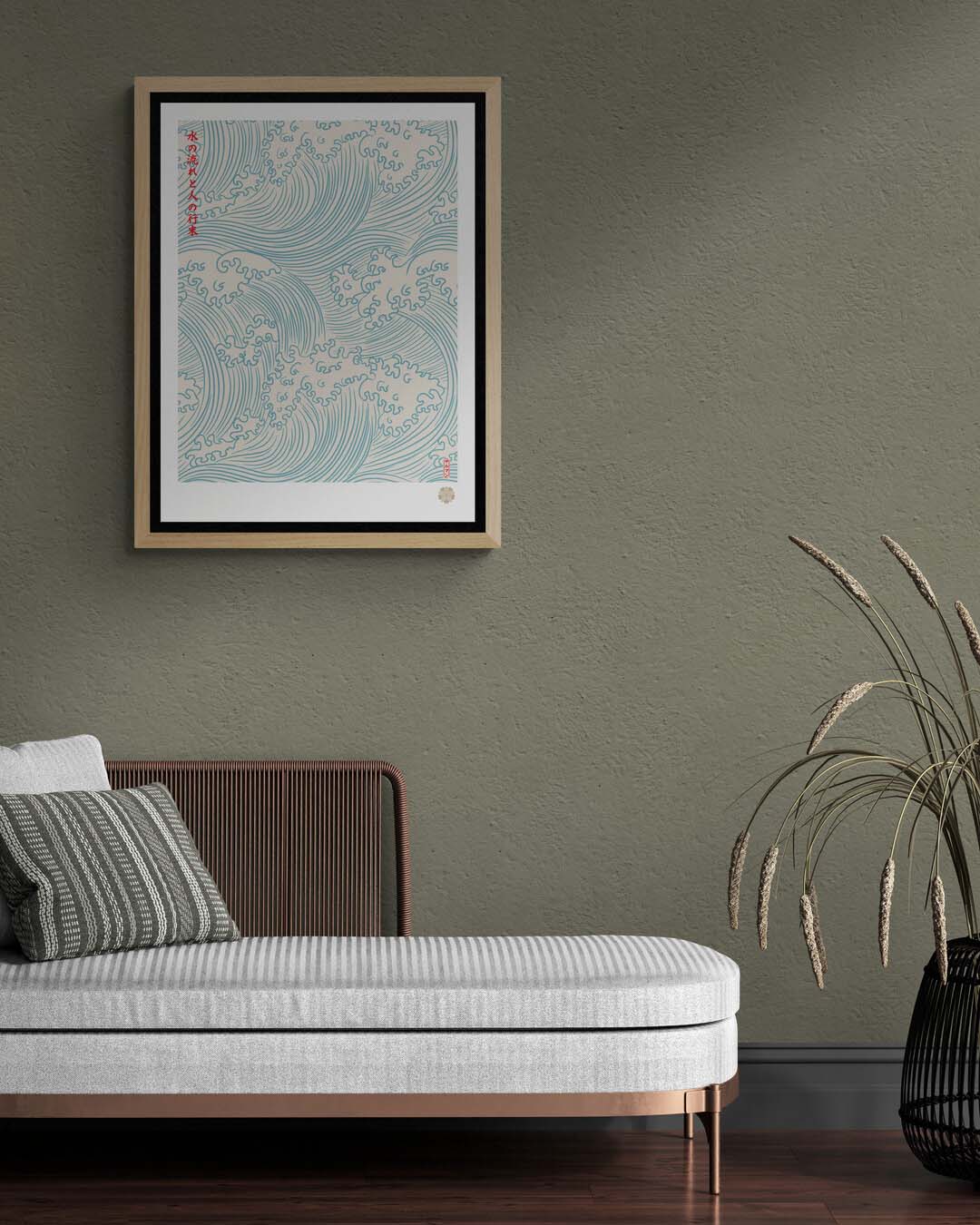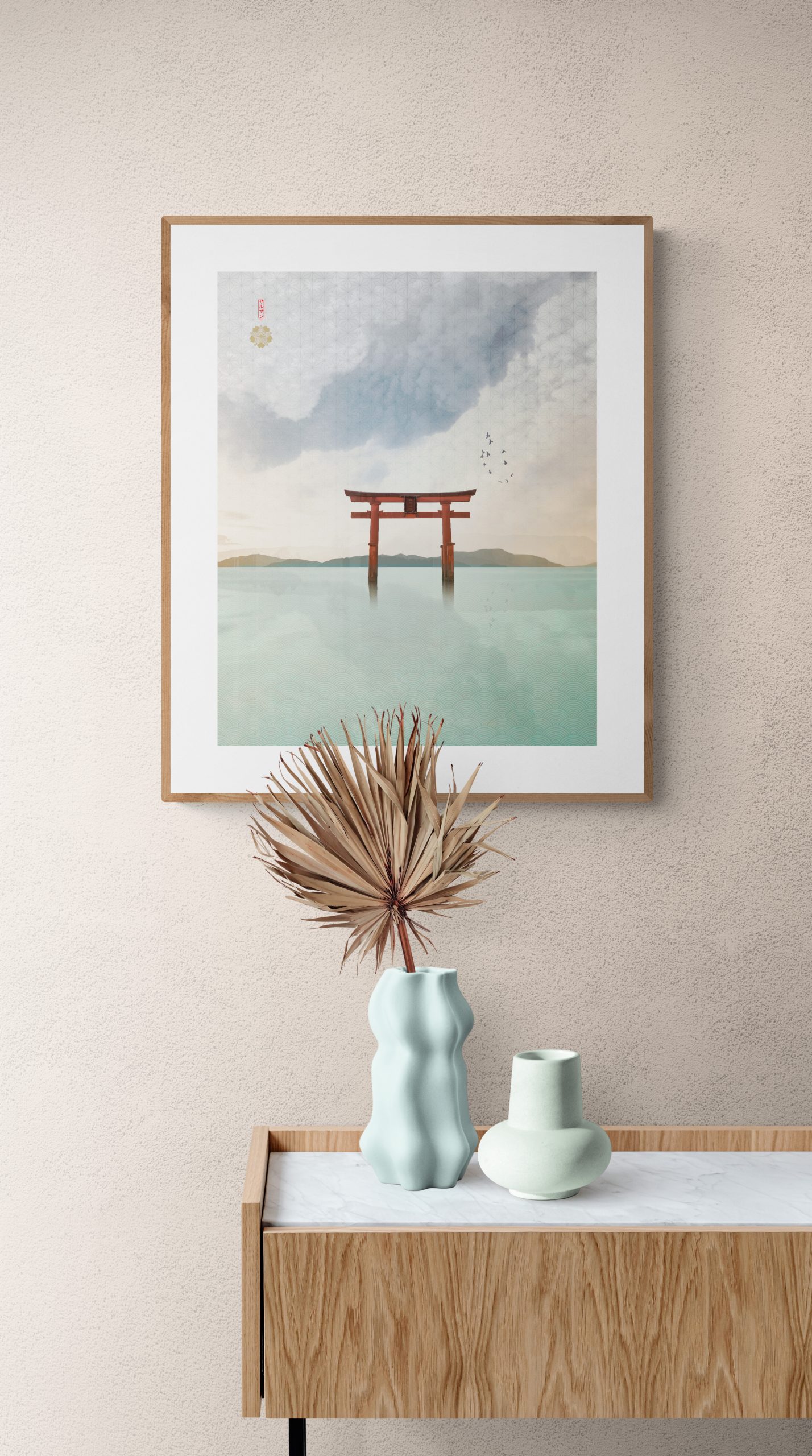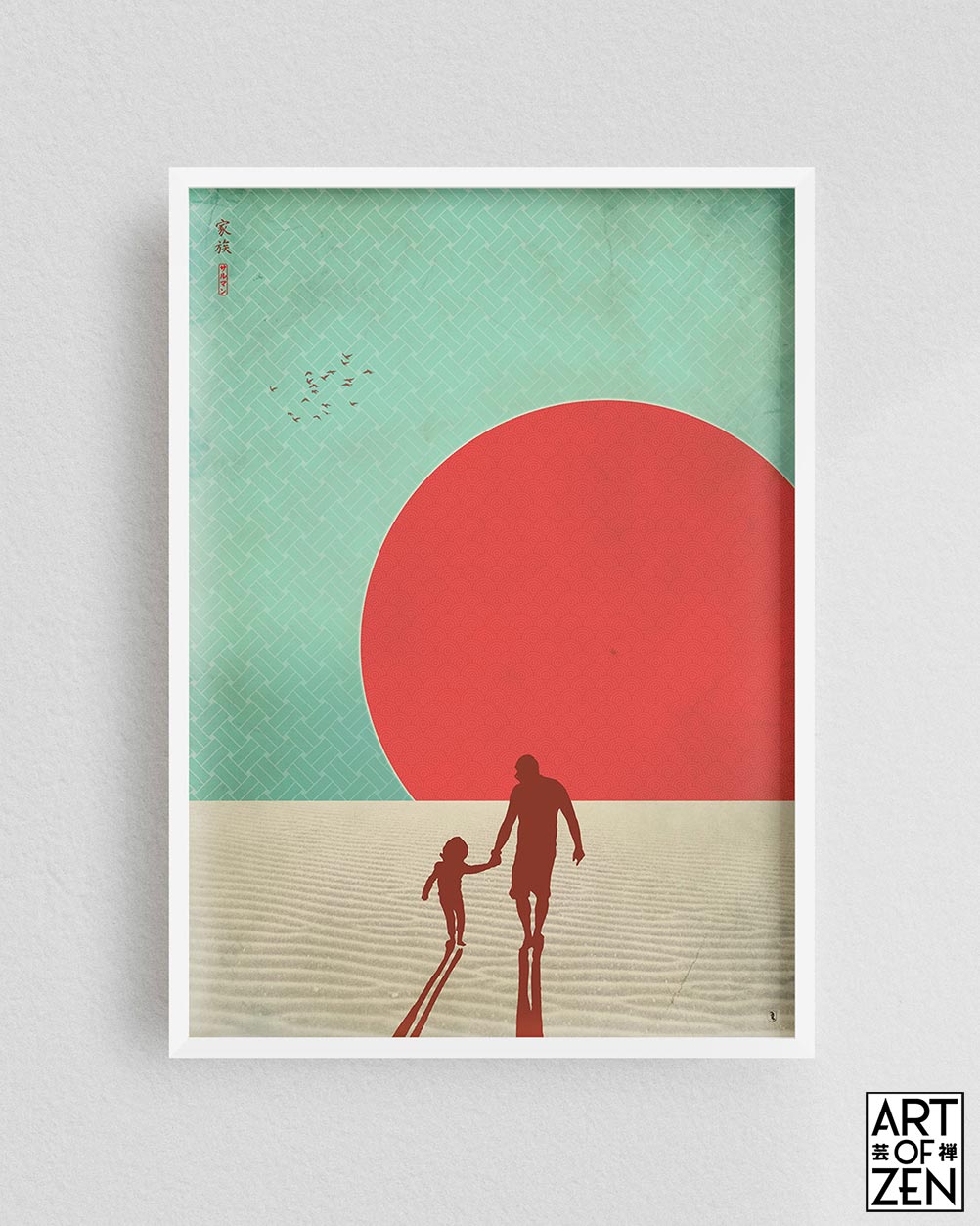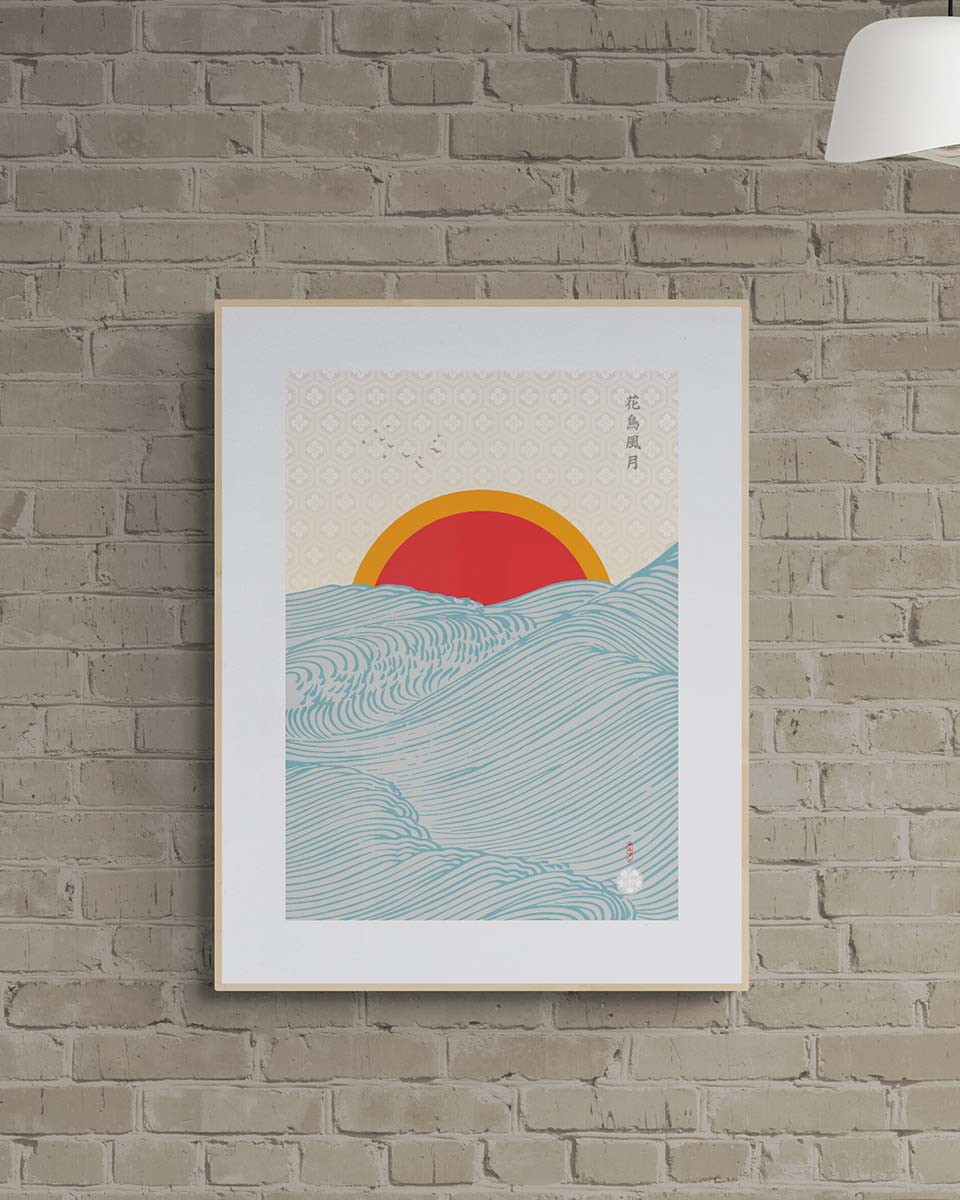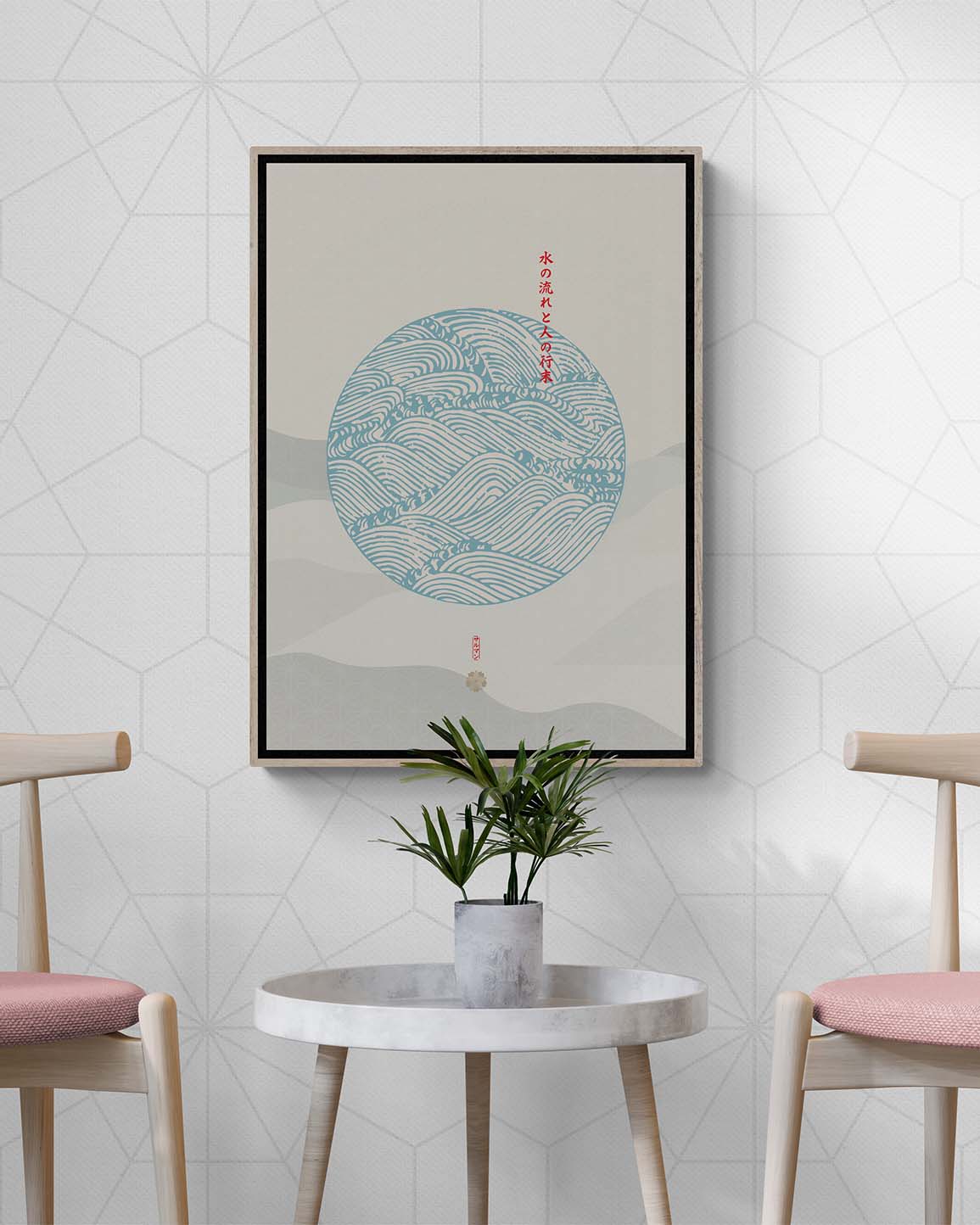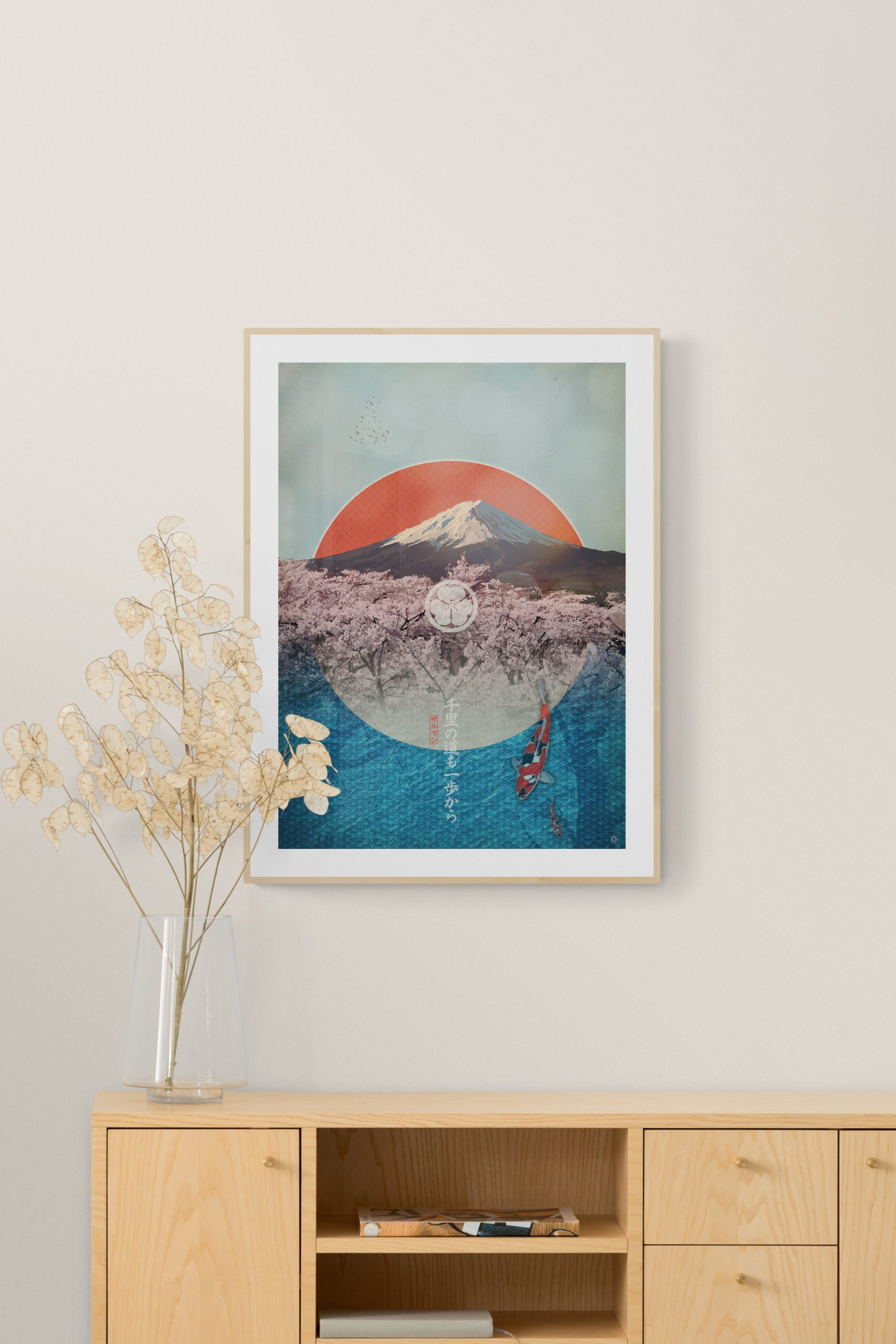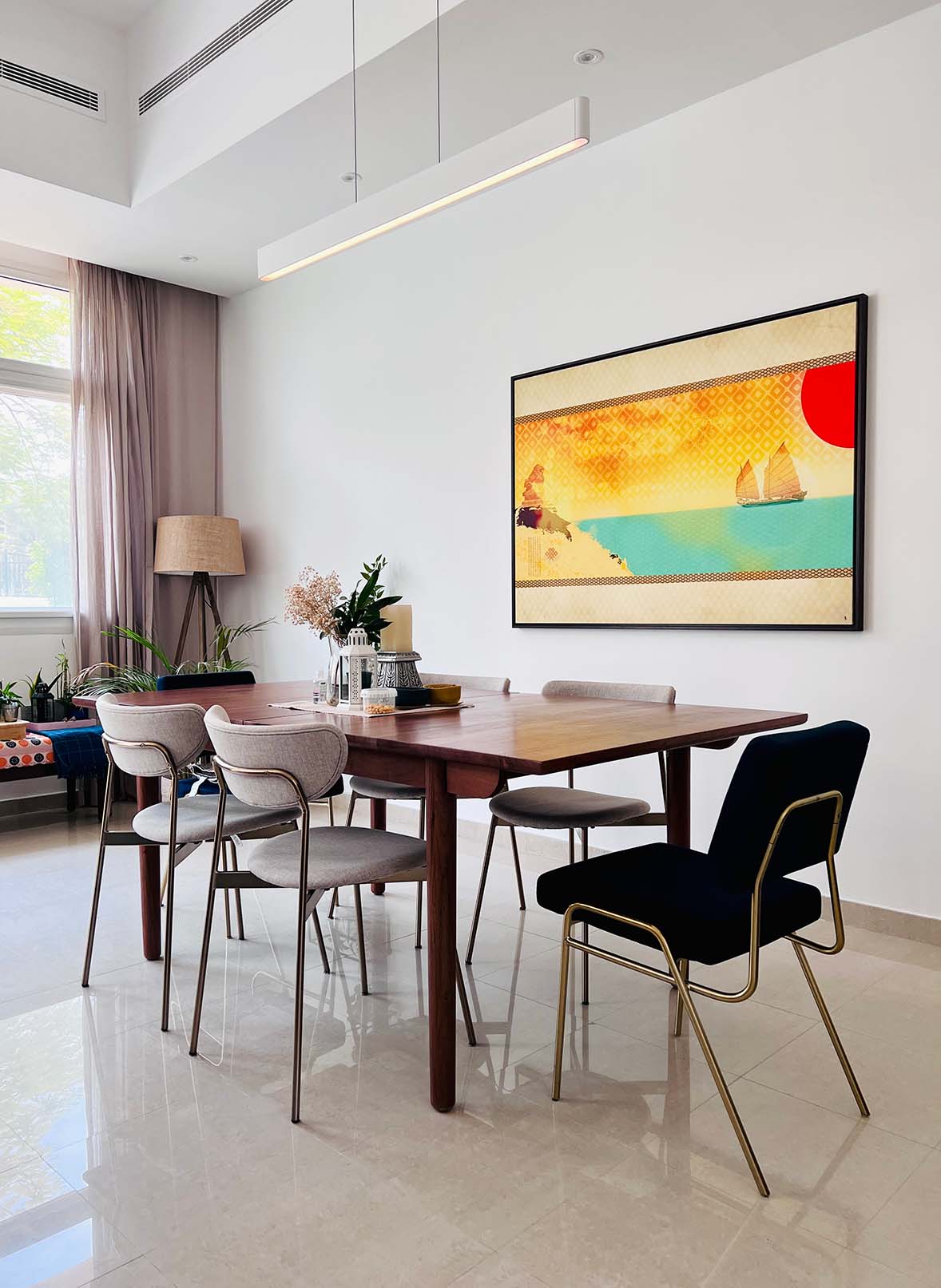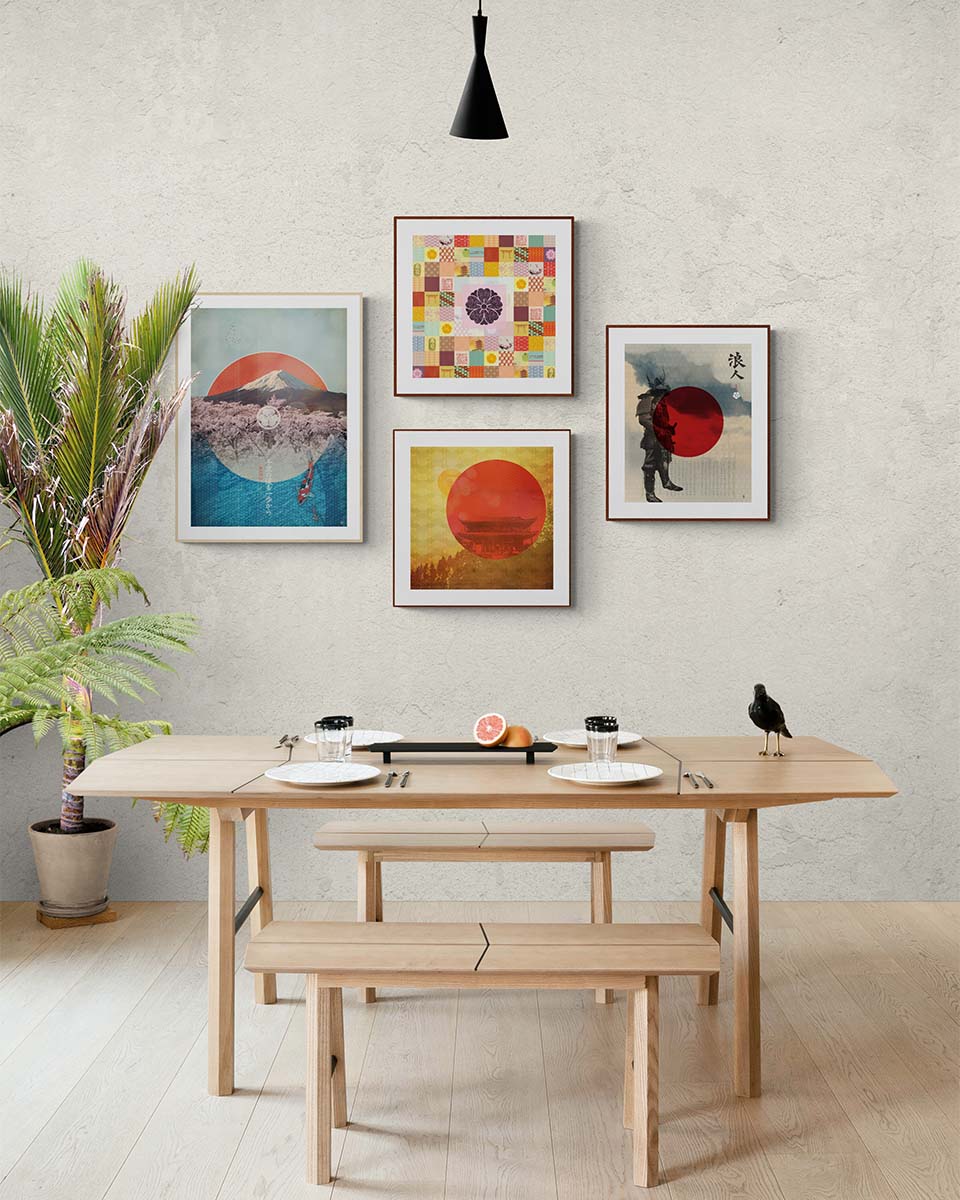Japandi Wall Art.
A collection of Japandi art prints.
In the world of interior design, the Japandi style has emerged as a captivating fusion of Japanese minimalism and Scandinavian simplicity.
Specifically, it is a fusion of the Scandanavian concept of hygge (coziness) and the Japanese concept of wabi-sabi (beautry in imperfection).
You can tell the Japandi style by warm earthy colors, clean lines, and organic shapes.
This harmonious blend has not only influenced furniture and décor but also made its mark in the realm of art.
Japandi art, characterized by its clean lines, muted color palettes, and a sense of tranquility, has gained popularity for its ability to transform living spaces.
Here we will explore the characteristics of Japandi wall art: Japandi abstract art, large format Japandi art, and Japandi art for living rooms.
Ultimately though, this marriage of Scandinavian and Japanese styles is about achieving zen.
Finally, you can read more about The Art of Zen story, our original wall art prints, and how to bring the Japandi style into your home from our blog.
The Essence of Japandi Art
At its core, Japandi art embodies the principles of minimalism, functionality, and a connection to nature. It is about finding beauty in simplicity and creating a sense of calm within one’s living space. Here are some key characteristics that define Japandi art:
Minimalistic Design:
Japandi art leans heavily on minimalism, favoring simplicity over clutter. Clean lines, uncluttered spaces, and a restrained use of elements are hallmarks of this style. In Japandi art, less is more.
Neutral Color Palettes:
The color palette in Japandi art is typically subdued, consisting of earthy tones, soft grays, whites, and blacks. These neutral colors create a serene and timeless atmosphere.
Natural Materials:
Both Japanese and Scandinavian design traditions emphasize the use of natural materials. In Japandi art, you’ll often find wood, stone, and other organic elements incorporated into the artwork. These materials contribute to a sense of warmth and authenticity.
Balance and Harmony:
Achieving balance and harmony is a fundamental aspect of Japandi art. The placement of elements and the use of negative space are carefully considered to create a sense of equilibrium and calm.
Inspired by Nature:
Nature is a common theme in Japandi art. You might see elements like trees, leaves, or mountains depicted in a minimalist and abstract manner, emphasizing the connection between humans and the natural world.
Pictured on the top right is an art print of an iconic Japanese Torii Gate with soothing colors. You can purchase the Torii print online.
Below that is an example of a traditional Japanese woodblock print, also known as ukiyo-e.
Japandi Wall Art: Elevating Your Space
One of the most effective ways to infuse Japandi style into your living space is through Japandi Wall Art. Equally, these artworks are designed to capture the essence of Japandi characteristics and they make a statement in your home. Here’s how Japandi Wall Art embodies the style:
Simplicity in Design:
Japandi Wall Art often features simple and elegant designs. A single, well-placed piece can create a focal point in a room and enhance its overall aesthetic.
Neutral Color Palettes:
The color schemes of Japandi Wall Art tend to align with the neutral tones of the Japandi style. These artworks complement the existing color scheme of your room while adding depth and texture.
Natural Elements:
Many Japandi Wall Art pieces incorporate natural motifs like branches, leaves, or abstract representations of landscapes. These elements bring a touch of the outdoors inside, fostering a sense of serenity.
The Age of Innocence is a collection of art prints by The Art of Zen that is heavily influenced by Japandi minimalism.
Specifically, you’ll find a unified color palette of sky blue, sand beige, with earthy brown silhouettes and shadows as well as natural settings.
Japandi Abstract Art: Embracing the Minimalistic Aesthetic
Simplicity with Depth:
Japandi Abstract Art balances simplicity with depth. It often features uncomplicated shapes and forms that evoke contemplation and a sense of calm.
Subdued Color Palettes:
While some abstract art can be vibrant and bold, Japandi Abstract Art tends to favor subdued color palettes. These artworks use muted tones to maintain a tranquil ambiance.
Balance and Negative Space:
Japandi Abstract Art places a strong emphasis on balance and the use of negative space. These elements create a sense of order and serenity in the artwork.
Pictured at the top left is an art print called Circle of Waves which embodies the Japandi aesthetic with its neutral color palette and a wave design at its center.
The second picture is of a minimalist art work with relief that plays with light and shadows to add intrigue.
Large Japandi Art: Making a Statement
Adding large format art is an immediate way to make a big impact to your Japandi interior. Large Japandi art would be of sizes that are 70 x 100 cm or larger, for example a 100 x 250 cm framed canvas. The appropriate size of of the artwork should be proportional to the size of the room or wall. You do not want to overwhelm the space from a size or color palette perspective. Therefore, include soft colored frames such as birch wood. And, ensure you have abstract shapes, minimal design, and muted colors to reinforce the Japandi style.
Impactful Simplicity:
Large Japandi art captures the essence of simplicity on a grand scale. These oversized pieces command attention and become focal points in a room.
Subtle Color Palette:
Even when large, Japandi art maintains its subdued color palette. The neutral tones create a calming effect, making them ideal for bedrooms and living rooms.
Nature-Inspired:
Large Japandi art often draws inspiration from nature, with oversized depictions of natural elements like trees, waves, or mountains. These artworks evoke a sense of tranquility and connection to the outdoors.
Finally, at The Art of Zen we carry a varied collection of Japanese art prints that fit the Japandi style. One of our best selling series is a collection of Mount Fuji wall art inspired by the great Japanese artist Hokusai. Pictured top left is our original art print entitled Fujimar from the collection.
Japandi Art for Living Rooms: Creating Inviting Spaces
The living room is often the heart of a home. Japandi art can play a significant role in creating an inviting and serene atmosphere. Here are some ideas for incorporating Japandi art into your living room:
Gallery Wall:
Create a Japandi-inspired gallery wall with a collection of small to medium-sized Japandi art pieces. The key is to maintain a sense of balance and cohesion in your arrangement.
Oversized Statement Piece:
Consider placing a large Japandi art piece above your sofa or fireplace to make a striking statement. This can serve as the focal point of your living room.
Nature-Inspired Art:
Choose Japandi art that features natural motifs like branches, leaves, or landscapes. These elements will complement the Japandi style’s emphasis on nature and harmony.
Custom Artwork:
Commission a piece of Japandi art that reflects your personal connection to the style and your living room’s unique ambiance. Custom art allows you to tailor the artwork to your space.
In conclusion, Japandi art, characterized by its minimalism, neutral color palettes, use of natural materials, and emphasis on balance and harmony, offers a captivating way to transform your living spaces. Whether you opt for Japansese ukiyo-e prints, Japandi abstract art, large format art, minimalist prints or bespoke pieces for your living room, you can create an atmosphere of serenity and timeless beauty that reflects the essence of Japandi style.
Looking to transform your space? Read about the 10 Steps to Create a Beautiful Japandi Home.
At The Art of Zen we have created a collection of original Japanese art prints and digital downloads that you can purchase online to bring the Japandi art style into your space.
